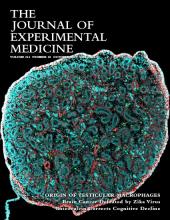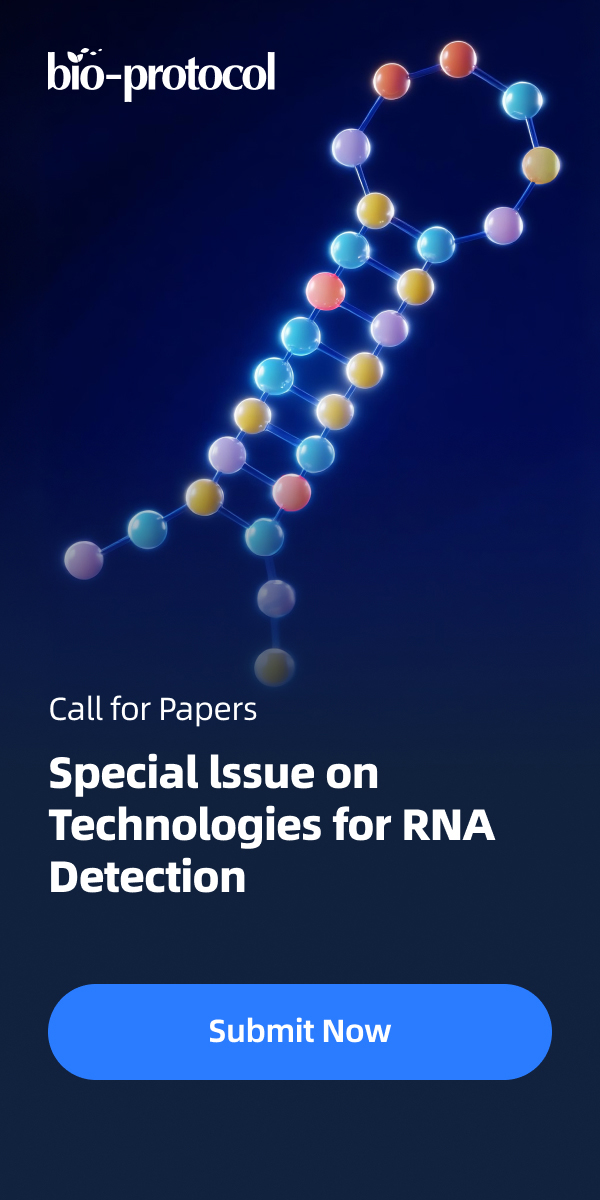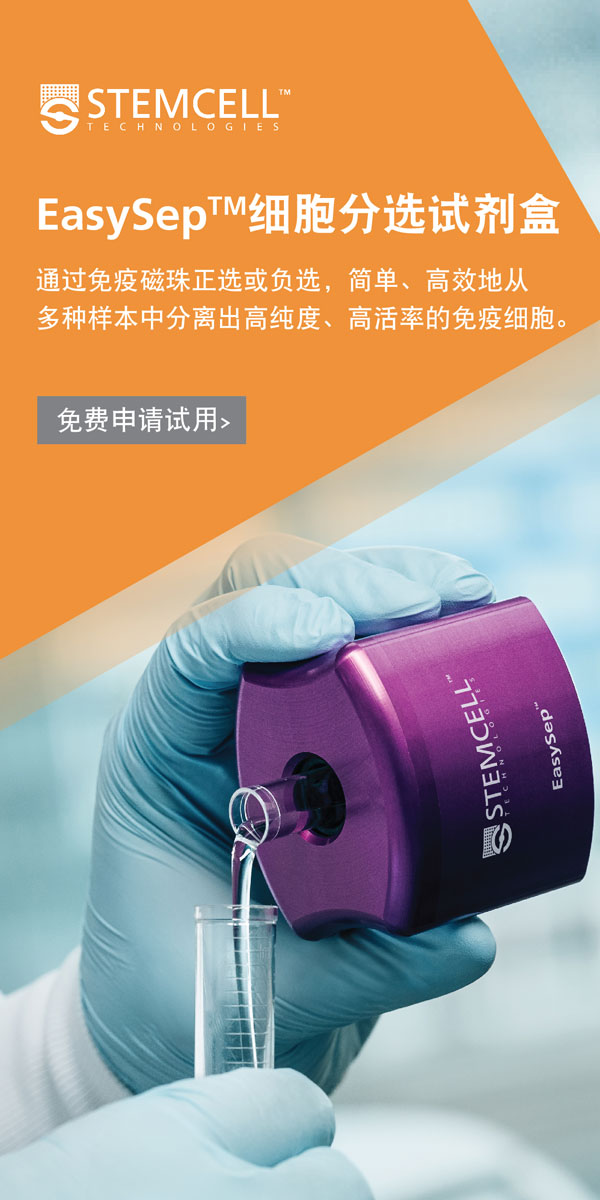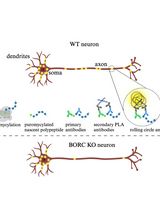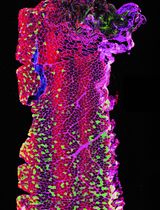- EN - English
- CN - 中文
Characterization of Mouse Adult Testicular Macrophage Populations by Immunofluorescence Imaging and Flow Cytometry
免疫荧光成像和流式细胞术鉴定小鼠成人睾丸巨噬细胞群体
发布: 2019年03月05日第9卷第5期 DOI: 10.21769/BioProtoc.3178 浏览次数: 6982
评审: Ruth A. FranklinSvetlana KurilovaShalini Low-Nam

相关实验方案
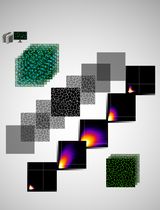
基于Fiji ImageJ的全自动化流程开发:批量分析共聚焦图像数据并量化蛋白共定位的Manders系数
Vikram Aditya [...] Wei Yue
2025年04月05日 2662 阅读
Abstract
Testicular macrophages (tMΦ) are the most abundant immune cells residing in the testis, an immune-privileged organ. TMΦ are known to exhibit different functions, such as protecting spermatozoa from auto-immune attack by producing immunosuppressive cytokines and trophic roles in supporting spermatogenesis and male sex hormone production. They also contribute to fetal testicular development. Recently, we characterized two distinct tMΦ populations based on their morphology, localization, cell surface markers, and gene expression profiling. Here, we focus and describe in detail the phenotypical distinction of these two tMΦ populations by fluorescence-activated cell sorting (FACS) using multicolor panel antibodies combining with high-resolution immunofluorescence (IF) imaging. These two techniques enable to classify two tMΦ populations: interstitial tMΦ and peritubular tMΦ.
Keywords: Macrophage (巨噬细胞)Background
The testis is the male reproductive organ where spermatogenesis and testosterone production occurs. tMΦ might be considered as “guardians of fertility” by their immuno-suppressive function to assure the immune-privilege status of the testis and their trophic roles in spermatogenesis and male hormone production, but the distinct functions of these macrophage populations are only starting to be elucidated (Mossadegh-Keller and Sieweke, 2018). Tissue-resident macrophages exhibit tissue-specific functions and gene expression patterns depending of their organs of residency (Gentek et al., 2014; Lavin et al., 2014) but also share common core tissue-resident macrophage markers as F4/80, CD11b, CD64, M-CSFR and for some tissues CX3CR1 (Gordon, 2002; Gautier et al., 2012; Yona et al., 2013; Gentek et al., 2014). Recently, two testicular macrophages (tMΦ) populations have been characterized using IF imaging and FACS (DeFalco et al., 2015; Mossadegh-Keller et al., 2017). Interstitial tMΦ can be identified by microscopy by their rounded morphology and localization in the interstitial space of the testis in close contact with testosterone-producing Leydig cells (Smith and Walker, 2014; DeFalco et al., 2015; Mossadegh-Keller et al., 2017). In contrast, the peritubular tMΦ exhibit an elongated morphology and surround the seminiferous tubules housing spermatogonial stem cells (SSC) (DeFalco et al., 2015; Mossadegh-Keller et al., 2017). Confirming previous observations (DeFalco et al., 2015), we observed that both tMΦ were positive for CX3CR1 and F4/80 by IF. Interstitial tMΦ can be distinguished by the strong expression of M-CSFR from peritubular tMΦ that selectively express high levels of MHCII (Figure 2) (Mossadegh-Keller et al., 2017). We further analyzed in depth the interstitial and peritubular tMΦ populations by FACS. We established an extended antibody panel going beyond previous protocols (DeFalco et al., 2015), excluding monocytes and dendritic cells and including CD64 as a key tissue-resident macrophage (Gautier et al., 2012; Mossadegh-Keller et al., 2017). Within the tMΦ CD45+Ly6C-CD11cloF4/80+CD11b+ fraction, we defined interstitial tMΦ as M-CSFR+CD64hiMHCII- cells and peritubular tMΦ as M-CSFRloCD64loMHCII+ cells (Figure 3).
Here, we describe IF and FACS protocols that will be instrumental to define and isolate these two tMΦ populations for further phenotypic and functional characterization.
Materials and Reagents
- Pipette tips
- Microscope slides (SuperFrost Plus, VWR, catalog number: 631-0108)
- Cover glass (VWR, catalog number: 470820)
- Hydrophobic pen, Mini PAP Pen (Life Technologies, catalog number: 008877)
- Simport Scientific Disposable Base Molds (Fisher Scientific, catalog number: 11670990)
- Eppendorf tube 1.5 ml (Sigma-Aldrich, catalog number: Z606340-1000EA)
- Sterilin tube (Thermo Fisher Scientific, catalog number: 129A)
- 5 ml Falcon Polystyrene Round-Bottom Tube (Fisher Scientific, Corning, catalog number: 352008)
- Filter 50 μm Filcon, Sterile, Syringe-type (Becton, catalog number: 340601)
- Wild-type C57BL/6J mice from Janvier labs
- CX3CR1GFP/+ mice (Jung et al., 2000)
- Ice
- DPBS 1x (Gibco, Life Technologies, catalog number: 14190-094)
- HBSS 1x (Gibco, Life Technologies, catalog number: 14025-050)
- BSA (Sigma-Aldrich, catalog number: A2153)
- Fetal Calf Serum (Biosera, catalog number: FB-1001/500)
- Saponin (Sigma-Aldrich, catalog number: 47036)
- Antigenfix (Diapath, catalog number: P0014)
- Optimum Cutting Temperature (O.C.T.) Tissue-Tek (VWR, catalog number: 256008-930)
- Isopentane (VWR, catalog number: 24872-323)
- Antibodies:
- Anti-CD16/32 (clone 2.4G2, BD Biosciences, catalog number: 553142, working dilution 1/200)
- Anti-CD45-BV421 (clone 30F11, BD Biosciences, catalog number: 560501, working dilution 1/200)
- Anti-F4/80-BV785 (clone BM8, BioLegend, catalog number: 123141, working dilution 1/200)
- Anti-CD11b-BV605 (clone M1/70, BD Biosciences, catalog number: 563015, working dilution 1/800)
- Anti-CD64-PerCP/Cy5.5 (clone X54-5/7.1, BioLegend, catalog number: 139308, working dilution 1/300)
- Anti-CD11c-BV711 (clone N418, BioLegend, catalog number: 117349, working dilution 1/300)
- Anti-CD115-PE (clone AFS98, eBiosciences, catalog number: 112-1152-82, working dilution 1/200)
- Anti-Ly6C-APC/Cy7 (clone HK1.4, BioLegend, catalog number: 128026, working dilution 1/300)
- Anti-I-A/I-E (MHCII)-PE/Cy7 (clone M5/114.15.2, BioLegend, catalog number: 107630, working dilution 1/300)
- Anti-F4/80-Alexa Fluor647 (clone BM8, BioLegend, catalog number: 123122, working dilution 1/200)
- Anti-MCII-efluor450 (clone M5/114.15.2, eBiosciences, catalog number: 48-5321-82, working dilution 1/500)
- Anti-M-CSFR (clone C-20, Santa Cruz, catalog number: sc-692, working dilution 1/800)
- Anti-rabbit-Alexa Fluor 594 (Jackson Immunoresearch, catalog number: 711-585-152, working dilution 1/500)
- Prolong Gold antifade reagent (Life Technologies, catalog number: P36930)
- Zombie Violet fixable live/dead staining (BioLegend, catalog number: BLE423113, working dilution 1/1,000)
- 30% sucrose (Sigma-Aldrich, catalog number: S9378) (see Recipes)
- Blocking Buffer for IF (see Recipes)
- Wash Buffer for IF (see Recipes)
- Prolong containing Sytox blue dye (Life Technologies, catalog number: S34857) (see Recipes)
- Enzymatic digestion Mix (see Recipes)a.Collagenase II (Worthington Biochemicals/Serlabo Technologies, catalog number: LS004174, 125 U/mg dry weight)
a.Collagenase II (Worthington Biochemicals/Serlabo Technologies, catalog number: LS004174, 125 U/mg dry weight)
b.DNase I (Roche, catalog number: 10104159001)
c.Working enzymatic digestion (500 µl/testis sample)
Equipment
- Pipettes
- Microscope slide holder/box (Heathrow Scientific, catalog number: 15994G)
- Vertical plastic staining rack
- Dissection scissors (Harvard Apparatus, catalog number: 72-8422)
- Milligramme balance (Mettler Toledo, catalog number: 30029085)
- SnapFrost80 (Alphelys)
- Cryostat (Leica, model: CM3050S)
- Confocal microscope (ZEISS, model: LSM 780)
- 40x/1.4 oil differential interference contrast objective (Plan-Apochromat)
- FACS LSRII instrument (BD)
- Thermomixer comfort (Eppendorf, catalog number: 5382000015)
- Rocking agitator (VWR, catalog number: 444-0756)
- Centrifuge
- Vortexer
- 4 °C refrigerator
- -80 °C freezer
Software
- FlowJo (Version 10.0.8)
- ImageJ (Version 1.49s, National Institutes of Health)
- Adobe Illustrator CS6 (Version 16.0.3)
Procedure
文章信息
版权信息
© 2019 The Authors; exclusive licensee Bio-protocol LLC.
如何引用
Mossadegh-Keller, N. and Sieweke, M. H. (2019). Characterization of Mouse Adult Testicular Macrophage Populations by Immunofluorescence Imaging and Flow Cytometry. Bio-protocol 9(5): e3178. DOI: 10.21769/BioProtoc.3178.
分类
免疫学 > 免疫细胞成像 > 共聚焦显微镜技术
免疫学 > 抗体分析 > 抗体检测
细胞生物学 > 细胞成像 > 共聚焦显微镜
您对这篇实验方法有问题吗?
在此处发布您的问题,我们将邀请本文作者来回答。同时,我们会将您的问题发布到Bio-protocol Exchange,以便寻求社区成员的帮助。
Share
Bluesky
X
Copy link



